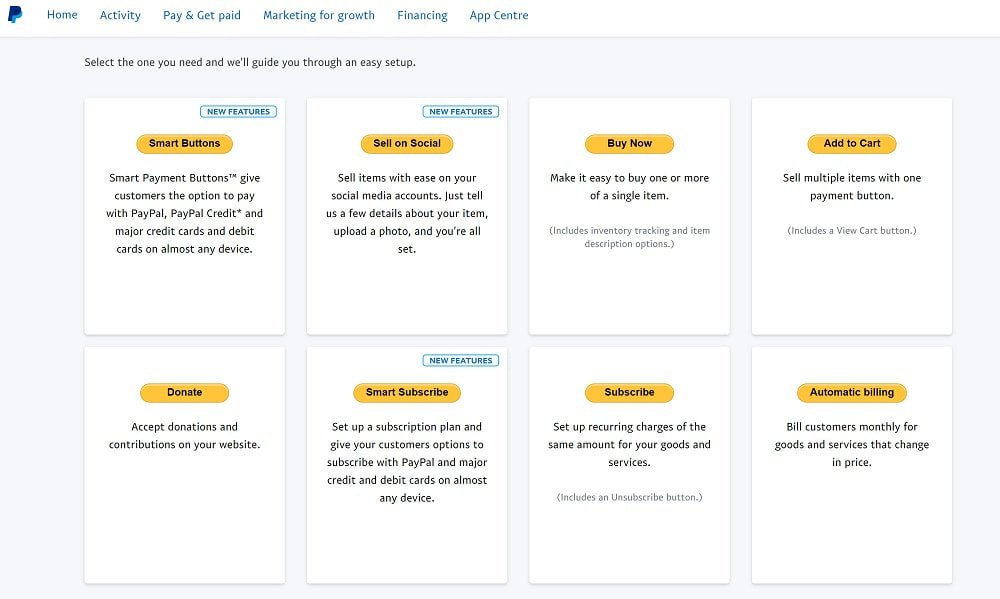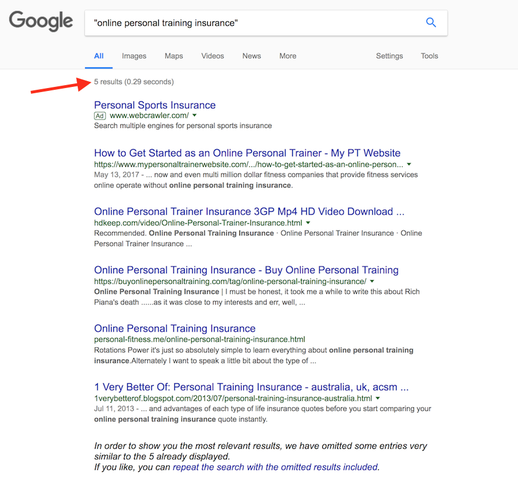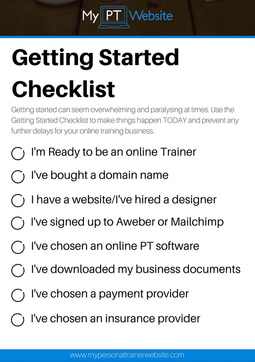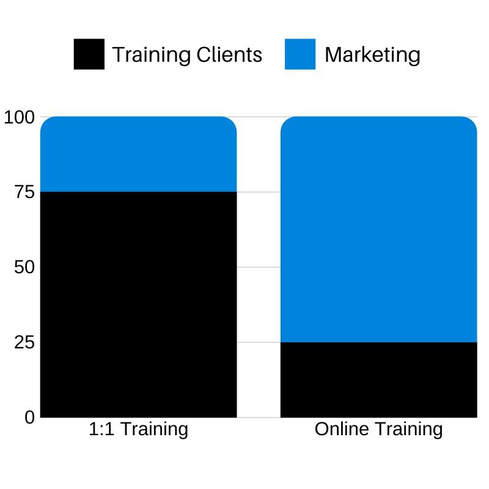 Photo by Nate Johnston
Photo by Nate JohnstonOriginally Posted On: https://www.mypersonaltrainerwebsite.com/blog/how-to-get-started-as-an-online-personal-trainer
Not only has online personal training landed in the digital space, it’s now the most popular service our clients ask us to help them with. If you want to get started as an online personal trainer as soon as possible, this comprehensive guide will help you decide on everything from software and websites to payments and insurance.
We’ve tested every system, marketing strategy and online PT software to help hundreds of personal trainers create their online fitness business.
We’ve also posted once about the first three steps to start an online training business. In this blog post we’ll teach you how we do everything, from choosing a niche and software to creating a website and integrating payments.
1. Should I Become an Online Personal Trainer?Here’s the deal. It’s not my place to tell you what you should and shouldn’t do with your time, but it is my duty as a service provider to help you understand whether I think online personal training will work for you.
Before you start building a website or searching for the best payment gateways, you need to be clear on why you want to become an online personal trainer. I say this because most PT’s who come to us have done so because their face-to-face business has either slowed or failed completely and they think online is easier because “you can reach more people”.
You can… But there’s a catch.
If you’re not doing so great with your face to face PT, online PT will almost certainly look like the easiest way out. But that might not be the case.
Here are a few reasons why.
- Online personal training is much harder to market than face-to-face PT. Establishing trust with a person you may never meet takes a lot of time and energy.
- Client uptake is much much slower. If you can get one new client a week in your face-to-face business, it could potentially be one per month as an online trainer.
- Online training does not take less time and effort. All of the time you would ordinarily spend training a face-to-face client would be spent on, marketing, support, retention and programming for an online client.
Essentially, while the amount of face-to-face time decreases, the amount of marketing time in front of a computer screen increases. With the above points in mind, I think you should only become an online trainer if:
- You have at least one year of experience at exercise programming with face-to-face clients. This is a must. If you can’t train people when they’re right in front of you, you don’t have enough experience to train people online. A qualification is not enough.
- You have a niche. If you only train generic clients with no specific goal in mind, what’s stopping them from going on bodybuilding.com and downloading one of their hundreds of workouts for free? A well defined niche enables you to become an expert and experts get paid more.
- You have some marketing experience. This is more to manage your expectations. I meet too many PT’s who think that once their systems are in place, that they’ll start receiving Paypal payment notification emails. Unless you either have a huge existing fan base or a very generous marketing budget to spend on ads, your online fitness business is going to take a lot of time to gain momentum.
- You can create content. It doesn’t matter what type of content it is; blogs, emails, Facebook posts, tweets, video or podcast. You need a way to provide value. If you can’t, you better have a huge marketing budget.
- You have a website. This is more important for the low end membership model style of training, which we’ll talk about later in the course, but you need a base of operations to represent yourself.
But, wait. What if you don’t fit the criteria above?
Look, you can start online training the moment you get your PT qualification, but you’re going to waste a lot of time and money. Instead, I recommend you master local, face-to-face training, which is much easier to market, get some cash flow and experience and then transition slowly.
You can do this by getting a job that…
- Isn’t in a gym, but takes up the least amount of time for the most money. This way, you can build your business in your spare time. There are lots of hours after 5pm and before 2am. Game of Thrones can wait. If it can’t, you should probably rethink your career strategy.
- Is in a gym, providing experience as well as money. This way you can train clients, gain the experience you need, earn an income and build your online presence in your spare time.
Getting a job will at least get you a steady cash flow to invest in your online training business, so you can hire professionals to do the things you’re no good at, like web design, copyrighting, SEO and marketing.
“But I became a personal trainer to get OUT of working for someone else?!”
Suck it up. Starting a business costs time and money. If was easy and free, everyone would be doing it! Be patient, be calculated, be strategic and think long term!
We’re now in the Information Age where it’s possible for anyone to start their own business. But just because a PT read one blog about starting your own business and then created a 10 minute YouTube video about, doesn’t mean it’s easy.
Still up for it? Let’s keep going.
Now that we have a better understanding of whether online personal training is even something you should be pursuing, let’s talk about the business set up.
An online business is where the internet is the main vehicle of attracting customers, marketing, advertising, processing payments, delivering products (usually), and managing other vital business components.
To start your online business you’re going to need to know at least a little bit about how each of your online business components work.
2. Domain & HostingDon’t get me wrong, it’s certainly possible to become a successful online personal trainer without a personal trainer website but let’s face it, having when someone is interested in working with you, they’re going to look for your site.
There’s no website without a domain and a hosting account. So pay attention, because it’s a vital step if you want to learn how to set up an online pt site. Your domain name is the address people will use to find your online training website (Ex. www.youronlinePTwebsite.com).
Don’t overthink naming you website too much. If you have a business name, use that. If you don’t use your personal name. (e.g. yourname.com). This step can be paralysing but honestly, nobody is going to be bothered unless it sounds really dumb or offensive. Besides, you can always change it later and they cost only $5-$15 per year!
Once you have some ideas lined up you can proceed to a tool like 1and1 and Godaddy to find out what’s available. Click the logos below to check out some of the most popular services.
If you already have a personal trainer website and it generates a steady flow of clients for you. Adding an online training service to your existing list of services can often be enough to get things moving. Especially if you intend to train the same types of clients that your existing site already appeals to.
If you don’t have a website, I suggest you hire a designer. Sure, you can build one yourself but you need to have a lot of marketing expertise to get it right. If you do it yourself, you risk a DIY website with poorly written copy and sub standard images being the face of your business. But hey, we’re obviously bias.
You’ll get told it’s easy to build a website, and it is. It’s also easy to draw a house but that doesn’t make you an architect. Just having a website isn’t enough. As an online trainer it’s your main marketing asset so it needs to establish trust, invite visitors to learn more about you, demonstrate your competency and gently nudge the visitor to become a lead.
Remember, online training is HARDER to sell, so your website needs to be tip top and trustworthy.
4. Member Portal/SoftwareThere are two ways to provide your online training clients with the tools they need to get results. An online training software like PT Distinction and Total Coaching or a member portal on your website. Or both.
A member portal is cheap but takes a significant amount of time to build. You’ll need at least 90 days worth of content in there before you can even start selling. Content might include workouts, cheat sheets, PDF guides, feedback forms, etc.
An online training software is much more “get set and go”. You can have most softwares set up in a matter of hours and take on clients pretty much straight away. We talk more about what software to choose in another lesson in this course.
Business documents include feedback forms, PARQ’s and Online Training Informed Consent forms. A lot of the forms you’d use in your face to face fitness business will work fine, you may just need to tweak a few of them.
You can download all of your personal trainer documents for free on our sister site. The Institute of Personal Trainers.
DOWNLOAD: PERSONAL TRAINER DOCUMENTS
6. Taking PaymentsOne of your most important tools. A payment gateway enables you to take payments from clients securely from anywhere in the world. Choosing one does not need to be a chore. Don’t get yourself obsessed over small percentages and payment fees. Just go for the trusted providers like Paypal or Stripe.

Why these payment gateways? Because your clients trust Paypal and Stripe. Consider the small percentage you pay in fees a trust fee. You’re paying the provider a fee because your clients trust the provider and therefore they trust there will be no issues when paying you for your services.
Insurance is a scary topic and one that should be taken seriously. The thought of being sued and having all of your personal belongings taken from you can be a paralysing prospect!
Unfortunately, information about insurance for online trainers is pretty scarce right now and even multi million dollar fitness companies that provide fitness services online operate without online personal training insurance.

With that said, you should at least have a privacy policy and terms of service on your website. This terms of service should explicitly say that anybody who works with you or consumes your material waives all liability. In order to sign up for your training they need to check a box saying they agree to it. Checking a box is legally binding.
Furthermore, consider adding ANOTHER form that requests users to agree to you using their name and images on your website as marketing materials. Although I’ve literally never seen a personal trainer get sued, I imagine most disputes would be over the use of images on a website.
I’m not in the least bit qualified to tell you which insurance provider to use so my advice is this. Check with a lawyer that’s local to you. He or she will be able to quickly tell you what type of insurance you need to provide online services from your country and state.
8. Finding Your First ClientNow that you’ve become an online personal trainer we need to find your first client! After all, a business with no clients is a dead business. There are two main ways to get more online personal training clients. Paid and Free.
Paid methods include:
- Facebook ads
- Google ads
- Off-site SEO
Paid methods are great if you have a bit of spare cash to invest as it’s an easy way to get more eyes on your business as soon as possible. If you don’t have any spare money lying around to invest in paid ads, there are plenty of free marketing methods.
Free marketing methods include:
- Creating valuable content on your blog
- Publishing that content across social media
- Building a lead magnet for your readers
- Sending them weekly updates
- Networking
Most PT’s start off with the free marketing methods because they have more time than money at the beginning. With that said, if you start your online personal training business off the back of your face to face training, you’ll likely have an existing audience to market to and maybe even some money to invest and work on both paid and free marketing strategies.
Checklist: How to Become an Online TrainerIf you want to get started as online trainer, download the Getting Started Checklist to start taking action TODAY. Tick off the relevant steps as you complete them and don’t waste another second on paralyzing decisions.
(Click to download)

